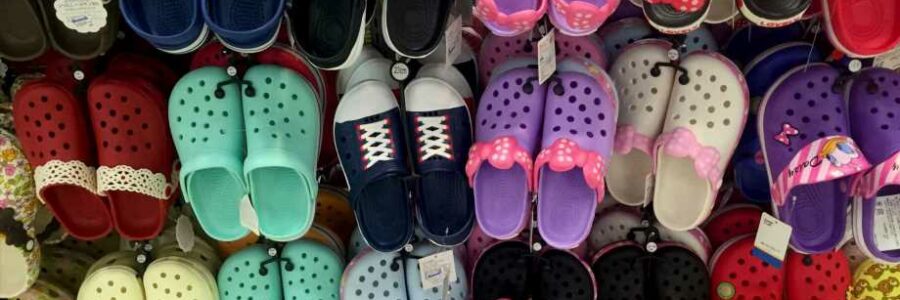
Crocs became a pandemic staple, but CEO Andrew Rees optimistic its new fans will stick around
- Crocs have been called the "it" shoe of the pandemic, and its latest results showed huge sales gains.
- Still, the company's stock is down more than 3% on Tuesday, amid concerns its pandemic boost could fade.
- Crocs CEO Andrew Rees said he is optimistic that the brand can grow with the help of new product innovations, such as sandals.
Some have called Crocs the "it" shoe of the pandemic, as the clog became a closet staple for consumers seeking comfort during their more casual pandemic lifestyle.
The popularity helped push Crocs to stunning sales gains in its latest quarter, but investors, fearing the best was behind it, sold off the stock on Tuesday. Shares closed down 3.8% at $80.01 on Tuesday, but the stock has more than doubled over the past year.
"The pandemic has allowed us to reach new customers, but I think consumers are also focused on what we can offer them in the future," Crocs CEO Andrew Rees told CNBC's "Power Lunch."
Rees said he remains optimistic that the brand can grow with the help of product innovations, such as introducing new sandals to its portfolio. He also noted that the footwear brand was trending even before the pandemic, putting them in a good position when Covid-19 hit.
"Sandals is a large product category and the accessible market for us around sandals is about $30 billion globally," said Reese.
The growth of their shoe charms, or Jibbitz, also contributed to the successful year that the brand had, doubling in the last year, as loyal Crocs fans personalize their shoes to make them unique.
The shoe also has a strong celebrity following, and counts Justin Bieber, Post Malone and Priyanka Chopra among its fans.
Earlier Tuesday, Crocs said its fiscal fourth-quarter net income surged to $183.3 million, or $2.69 a share, from $19.9 million, or 29 cents a share, a year earlier. Excluding items, Crocs earned $1.06 a share.
Revenue rose 56.5% to $411.5 million. Crocs said it expects revenue to rise 40% to 50% in the first quarter, and between 20% to 25% for the full year.
Source: Read Full Article